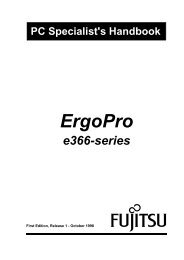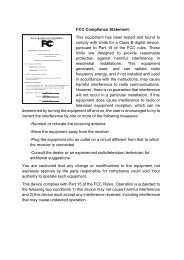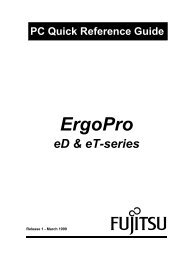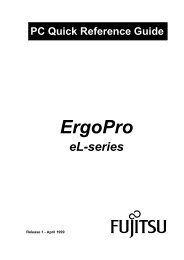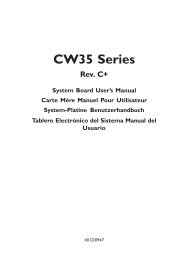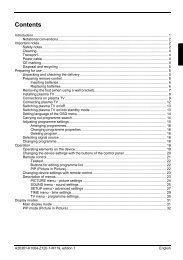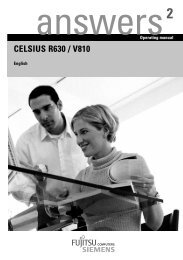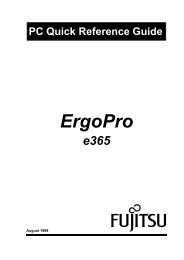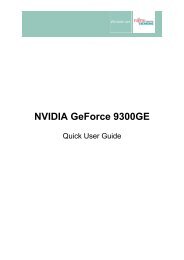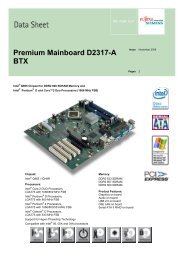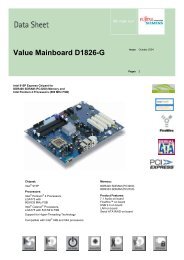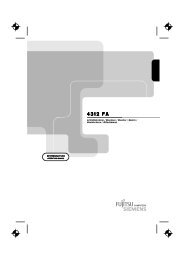Intel(R) Matrix Storage Manager User's Manual - Fujitsu UK
Intel(R) Matrix Storage Manager User's Manual - Fujitsu UK
Intel(R) Matrix Storage Manager User's Manual - Fujitsu UK
Create successful ePaper yourself
Turn your PDF publications into a flip-book with our unique Google optimized e-Paper software.
R<br />
9 Serial ATA (SATA)<br />
9.1 Description<br />
Serial ATA (SATA)<br />
Serial ATA (SATA) is a storage interface designed to replace parallel ATA (e.g. IDE<br />
technology). SATA was designed for a variety of reasons including performance headroom,<br />
cabling issues, and voltage tolerance requirements. SATA combines software and operating<br />
system transparency, low cost, scalability, and design flexibility. One of the main design<br />
advantages of SATA is that the cables are thinner than ATA cables, which not only improves air<br />
flow inside the case but also allows smaller case designs. Another design advantage is that the<br />
SATA cables can be up to 1m long, compared to the 45cm of the older PATA cables, which<br />
allows more flexibility in hard drive placement within the case. The signal voltage is much lower<br />
as well: 250 mV for SATA versus 5 V for PATA. SATA has attracted widespread industry<br />
support through the Serial ATA Working Group (www.sata-io.org).<br />
Note: Please refer to Appendix A for additional information on Serial ATA hard drives.<br />
9.2 Installing Serial ATA Hard Drives<br />
Note: Please refer to Appendix A for additional information on Serial ATA hard drives.<br />
Installing Serial ATA (SATA) hard drives requires a SATA data cable (7-pin, 4-conductor) which<br />
supports the Serial ATA protocol and a SATA power cable. Either end of the SATA data cable<br />
can be connected to the SATA hard drive or the connector on the motherboard.<br />
<strong>User's</strong> <strong>Manual</strong> 21



